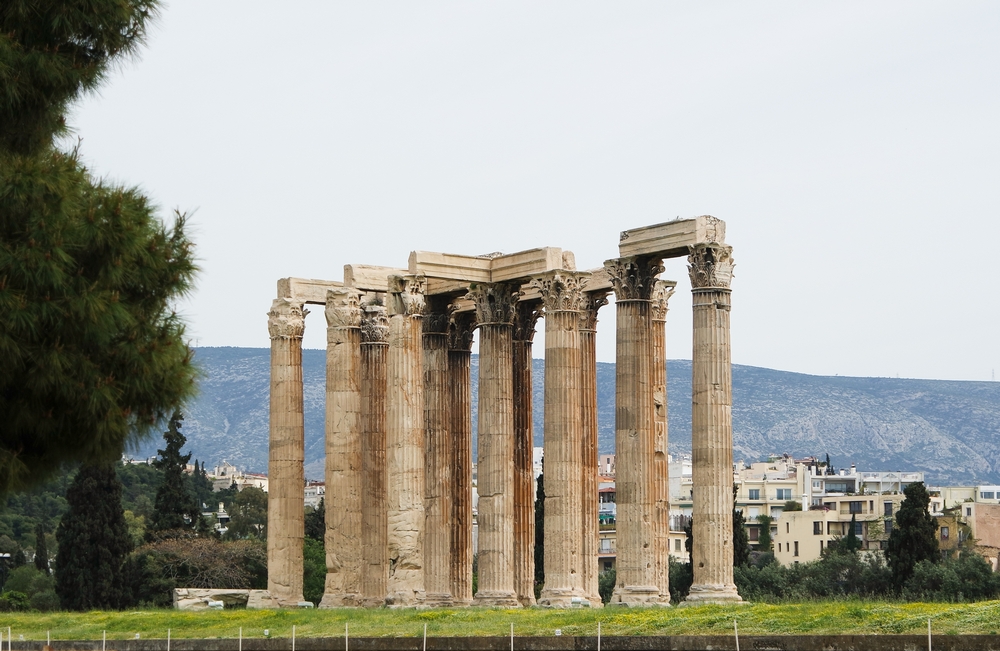Temple of Olympian Zeus
The temple of Olympian Zeus is one of the three largest temples of its kind worldwide and 16 columns have survived.
Location
Timeline
Modern and Contemporary era (1821 - )
The area of the Temple of Olympian Zeus was used for recreation purposes, demonstrations and as an exam hall for refugee children from Asia Minor.
1936 During the Metaxas dictatorship, it was used to publicly burn so-called "dangerous" books.
Ottoman era (1453- 1821)
Byzantine era (331 AC- 1453)
Roman era (30 BC- 330 AC)
132 AD Emperor Hadrian ordered the works to restart and after seven years, the temple was finally completed. The temple was full of statues of Hadrian, which had the inscription "Olympian".
Hellenistic era (322- 31 BC)
174 BC King Antiochus IV Epiphanes of Syria attempted to complete the temple. As a result, the temple was covered with marble, had columns of Corinthian order, but it remained unfinished, roofless and without pediments.
86 BC Sulla moved some of the temple's capitals to Rome to decorate the Capitol.
Classical era (478-323 BC)
The first attempt to marble the temple was made in the 4th century BC.
Archaic era (800-479 BC)
515 BC Began the temple’s construction by the tyrant Peisistratos the younger at the site of a pre-existing temple of the 6th century BC.











Share